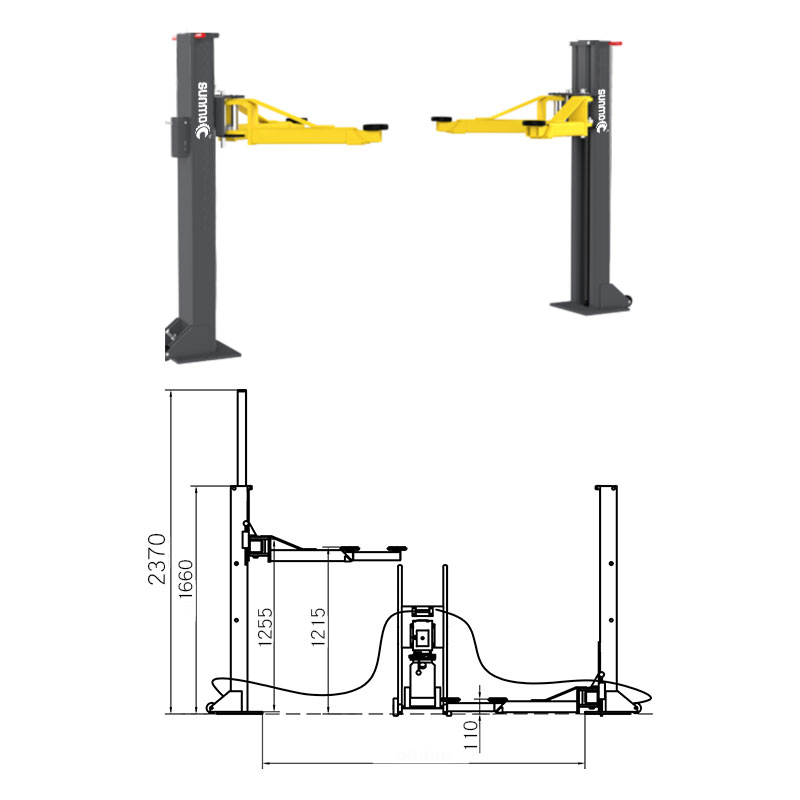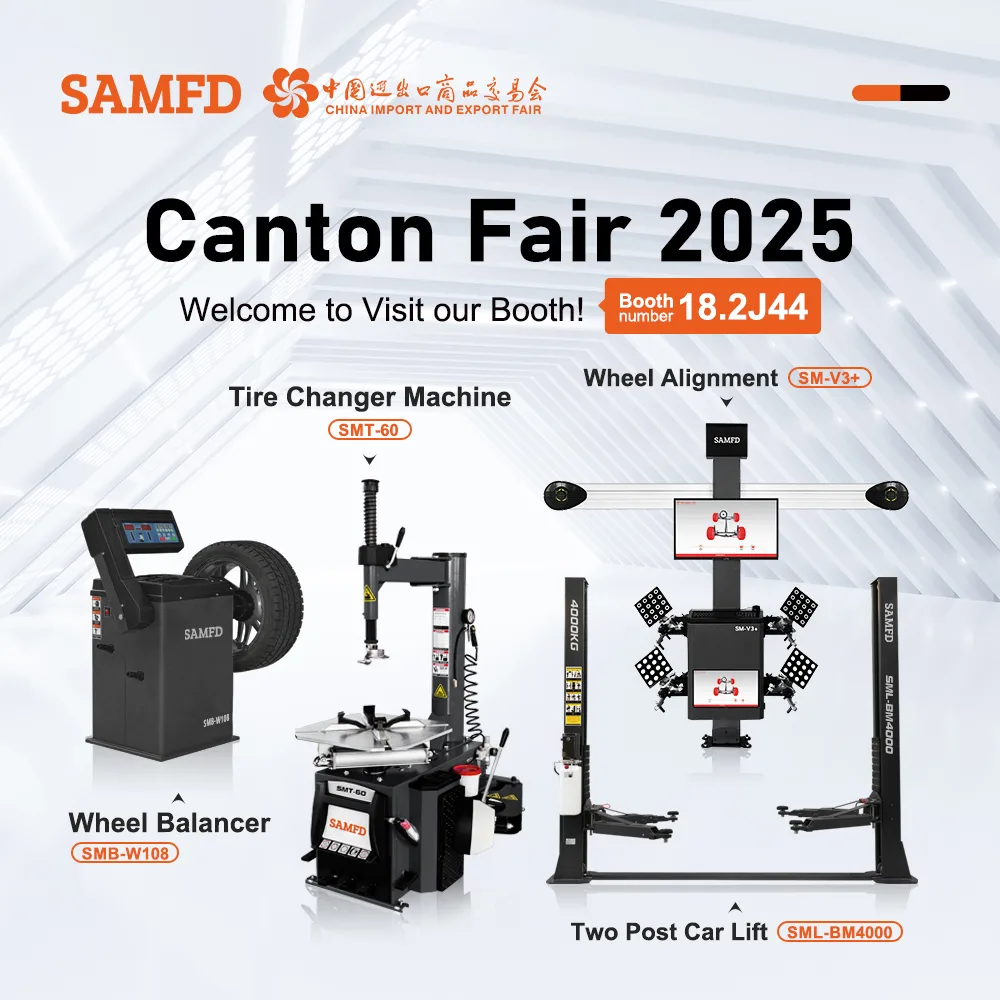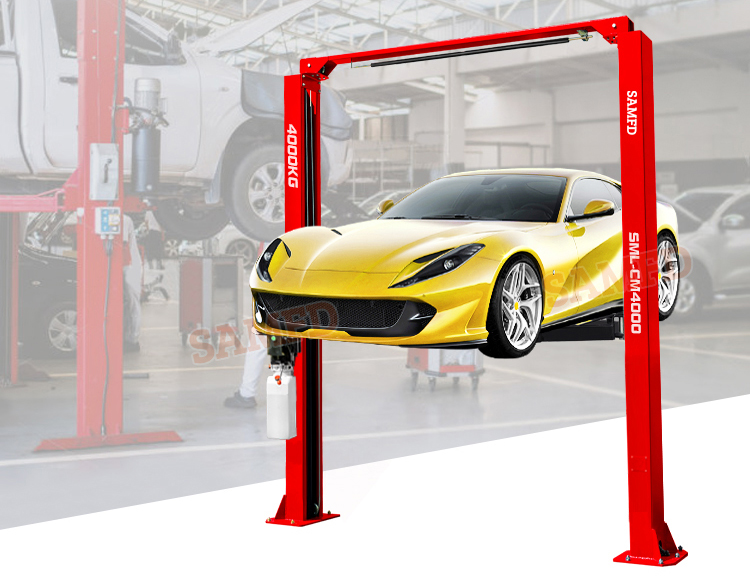Two-post lifts have become indispensable equipment in automotive repair and maintenance, serving as a critical tool for tasks ranging from minor tire adjustments to major overhauls. Their reliability and proper operation directly impact technician safety and repair quality. Widely adopted across repair facilities—from multi-brand service centers to specialized tire shops—these lifts demand strict adherence to operational protocols and maintenance routines to ensure longevity and safety. Below are key guidelines for the correct use and upkeep of two-post lifts.
Two-Post Vehicle Lifts Operational Best Practices
- Positioning and Preparation
- Shorten lift arms to their minimum length and align the lifting pads beneath the vehicle’s manufacturer-recommended support points. Adjust pads to ensure even contact with the chassis.
- After initial contact, raise the lift slightly to confirm the vehicle is securely positioned and balanced.
- Lifting and Safety Checks
- Gradually elevate the vehicle while monitoring load distribution. Once lifted to the desired working height, engage the mechanical safety locks and lower the lift onto them before starting repairs.
- Lowering Procedures
- Prior to descent, re-raise the vehicle to disengage safety locks, then slowly lower it until the arms fully retract. Only then should the vehicle be moved.
Two-Post Vehicle Lifts Maintenance Protocols
Monthly Inspections
- Hardware Integrity: Tighten all anchor bolts and inspect chains, connectors, bolts, and pins for wear or damage.
- Lubrication: Apply spray lubricant to chains/cables and replenish high-quality heavy-duty grease on column guide rails to ensure smooth movement.
- Hydraulic Systems: Examine hydraulic hoses for leaks or wear, replacing compromised parts immediately.
Biannual (6-Month) Checks
- Component Wear: Inspect all moving parts, including pulleys and cables. Lubricate pulley axles if operation feels sluggish.
- Balance and Alignment: Adjust cable tension to maintain level lifting and verify column vertical alignment.
- Comprehensive Lubrication: Re-grease internal column angles to minimize friction and enhance lifting consistency.
Two-Post Vehicle Lifts Safety Reminders
A malfunctioning lift poses severe risks. Facilities must immediately take equipment offline if anchor bolts fail or critical components show excessive wear. Regular training on lift operation and emergency protocols is equally vital to safeguarding personnel.
Conclusion
As a backbone of modern automotive repair, two-post lifts require disciplined operation and proactive maintenance. By adhering to these guidelines, repair shops can maximize equipment lifespan, ensure technician safety, and maintain efficient service delivery. Industry professionals are urged to treat these protocols as non-negotiable standards, reinforcing a culture of safety and precision in every workshop.
This structured approach transforms technical guidelines into an engaging news piece, emphasizing safety and practicality while maintaining professional rigor.
Choose our car lift, detailed installation and operation instructions, and good after-sales guarantee. — China Car Lift Manufacturers
YANTAI JINTUO AUTOMOBILE TECHNOLOGY CO.,LTD. was founded in 1996. It specializes in Car lift, Auto Body Frame Machine and Wheel Alignment Machine with technology development, product development, production, sales and service.





